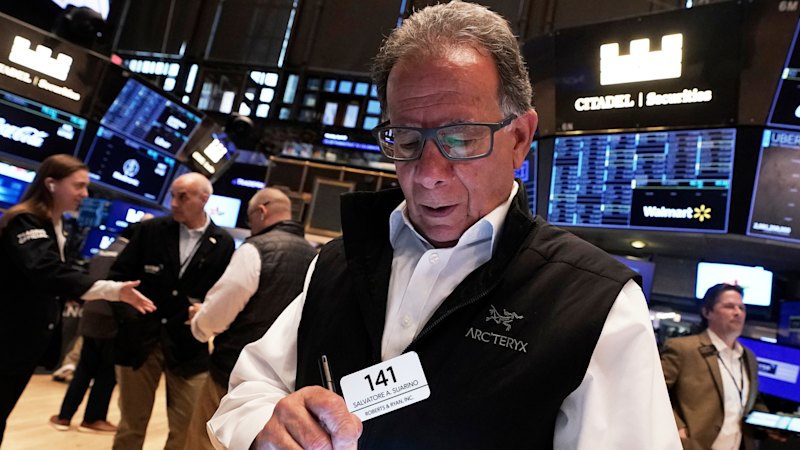
The Australian sharemarket slipped into negative territory by lunchtime on Friday, following overnight losses on Wall Street where influential technology stocks took a hit. The S&P/ASX 200 index declined by 11 points, or 0.1 percent, to 8817.3 in early afternoon trading. Despite the overall dip, six out of eleven industry sectors remained in positive territory, with energy stocks leading the charge.
Financial stocks showed mixed results, with the National Australia Bank rebounding 1.9 percent after previous losses, while Commonwealth Bank and Westpac fell by 1 percent and 0.5 percent, respectively. ANZ Bank remained flat, and Macquarie Group experienced a significant drop of 7 percent after reporting a $1.7 billion profit that fell short of expectations.
Energy and Mining Sectors Show Mixed Results
Energy stocks provided some support to the broader market as oil prices rose. Woodside Energy increased by 1.5 percent, Ampol by 0.3 percent, and Santos by 0.6 percent. Meanwhile, mining stocks presented a mixed picture. Iron ore giants Rio Tinto, BHP, and Fortescue Metals Group saw declines of 1.7 percent, 0.8 percent, and 1.8 percent, respectively, as iron ore prices retreated. In contrast, gold miners like Evolution Mining and Northern Star Resources gained 0.2 percent and 0.6 percent, buoyed by rising gold prices.
Technology Sector Under Pressure
Technology stocks mirrored the downward trend of Wall Street’s Nasdaq. WiseTech Global fell by 1.2 percent, Xero by 1.6 percent, and Life360 by 2.3 percent in early trading. The Australian dollar was trading at US64.76¢ at 12:36 PM AEDT.
The technology sector has been pivotal in driving Wall Street’s movements throughout the week. Thursday’s losses pushed major indices into negative territory for the week, potentially ending a three-week winning streak for the S&P 500, the Dow Jones Industrial Average, and the Nasdaq Composite.
Wall Street’s Struggles and Broader Implications
On Wall Street, the S&P 500 fell by 1.1 percent, the Dow dropped by 398.70 points, or 0.8 percent, and the Nasdaq fell by 1.9 percent. Key players like Nvidia and Microsoft, which fell by 3.7 percent and 2 percent respectively, significantly influenced the market’s direction. Amazon also contributed to the decline, slumping by 2.9 percent.
The focus on corporate earnings and forecasts remains a central theme on Wall Street. The latest round of results is crucial in providing insights into the economic outlook amid a lack of broader economic data due to the ongoing U.S. government shutdown.
“We anticipate the Fed will continue to implement rate cuts to prevent any weakness in employment from accelerating,” said Seema Shah, chief global strategist at Principal Asset Management.
This absence of data has left the Federal Reserve in a challenging position, as it must decide whether to cut interest rates further to counter potential economic slowdowns without exacerbating inflation.
Global Economic Concerns and Future Outlook
The U.S. government shutdown has also impacted other sectors, notably airlines, as staffing issues at airports have prompted the Federal Aviation Administration to reduce air traffic by 10 percent across 40 high-volume markets. This has led to declines in stocks for American Airlines, Delta Air Lines, and United Airlines.
Meanwhile, European markets experienced declines after the Bank of England decided to keep its main interest rate unchanged, highlighting global economic uncertainties.
As the week concludes, investors remain vigilant, closely monitoring both corporate earnings and any economic updates from private sources. The ongoing government shutdown continues to obscure the economic landscape, leaving markets to rely on alternative data sources to gauge economic health.
With these developments, the coming weeks will be critical in determining whether the optimism seen earlier in the year can be sustained or if markets will face further volatility.







